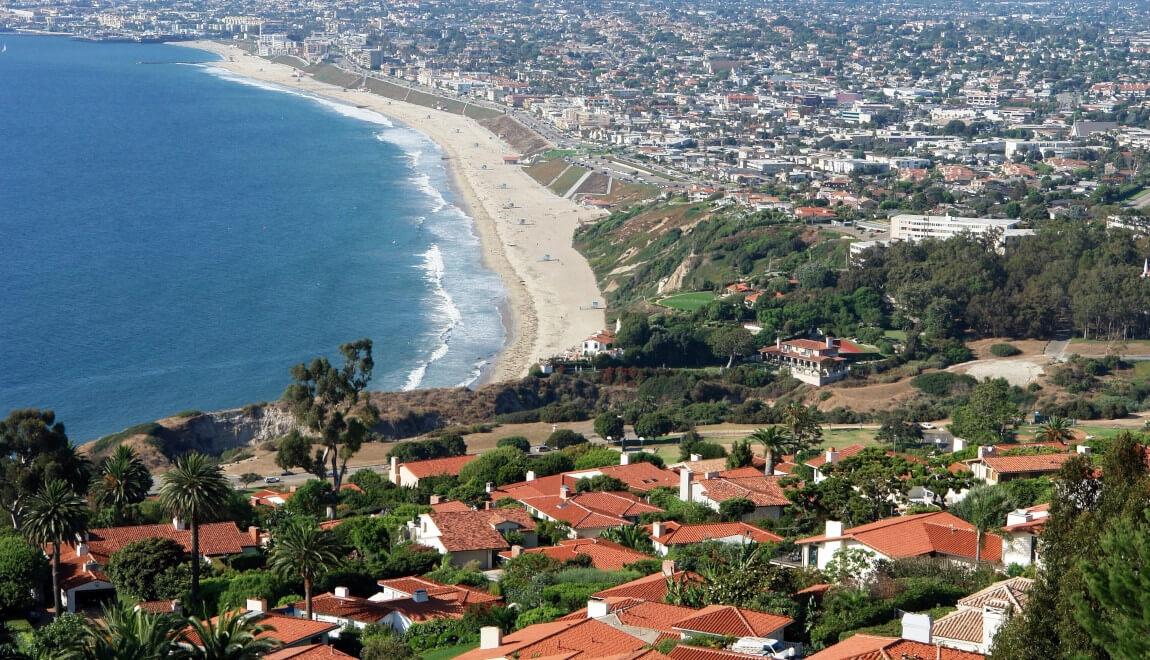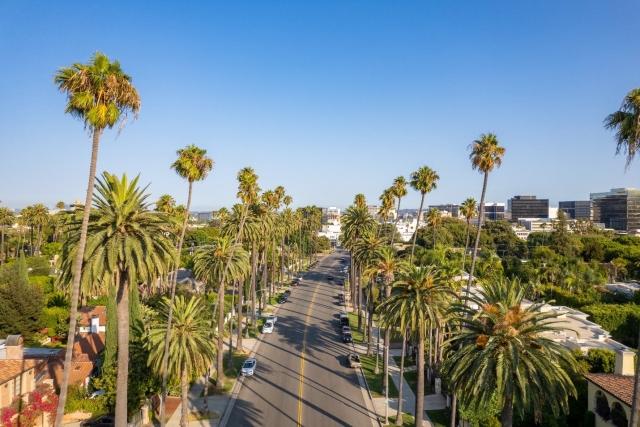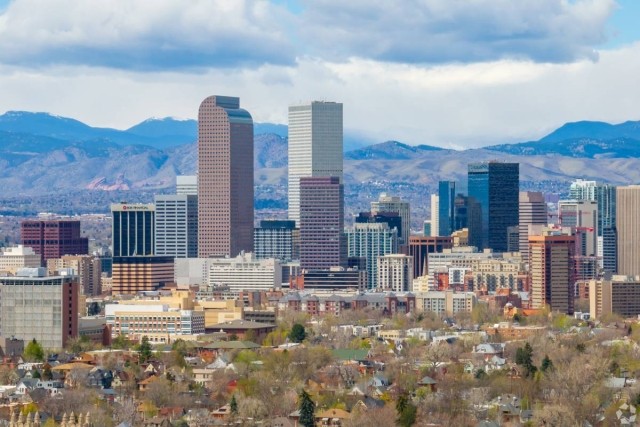“I Love L.A.!” Randy Newman famously sang in 1983, and millions of residents agree with him. Many consider Los Angeles, the second biggest city in the nation and the most populous city in California, to be a place of pure magic. It’s where Hollywood stars rub elbows with common people, the sun shines every day, and a sense of unreality pervades everyday life.
However, as anyone who actually lives in L.A. can tell you, Southern California’s reality doesn’t always match the fantasy. So before retiring in Los Angeles, consider this list of pros and cons.
L.A. Weather: Gotta Wear Shades
The weather is a primary reason Los Angeles is so popular with residents of all ages. Although the city can see cooler winters (which often extend into damp, cool springs), the average high temperature falls in the 70-85 degree range. Most days are sunny, and rain tends to be concentrated in seasonal patches. So, Los Angeles is a perfect choice for retirees who like neither extreme cold nor extreme heat. L.A. also has low humidity. If you want a change in weather, just drive a few hours to the California desert for heat, or a few hours north for cooler temps and even snow in the mountains.
L.A. Culture: Diverse, Artistic, and Accessible
Los Angeles is a cultural mecca, with some of the world’s finest and most diverse communities, art, music, and lifestyles. Given the city’s sheer sprawl, regional pockets of nearly every nationality exist. Although L.A. isn’t a “walking city,” retirees can live in a community where most of what they need is within a walkable radius or a walkable neighborhood.
Downtown L.A. is especially great for patrons of the arts, with apartments and condominiums near to the Walt Disney Concert Hall, the Staples Center, and the historic Central Public Library. Downtown L.A. also has attracted some of the world’s most innovative chefs and restaurateurs.

L.A. Outdoors: Heaven for Adventurers
Retirees looking for an active lifestyle will love Los Angeles’ proximity to varied adventures. Soak up the sun at the beach or go skiing in the mountains. L.A. has regional hiking trails all over its landscape, and cycling is a viable and popular means of transportation. Enjoy traveling? Discover road trips both short and long. San Francisco is five hours away by car; Las Vegas, four; and San Diego and the Mexican border, just two. A cruise up the California Coast can make for a fascinating weekend journey, soaking up the state’s diverse and beautiful cities, while experiencing the breathtaking Pacific Ocean and national parks along the way.
L.A. Healthcare: World Class
Los Angeles boasts the very best in healthcare. Seniors will find highly respected medical professionals, plus top-of-the-line centers such as UCLA Medical Center (ranked No. 2 in the nation for geriatrics) and Cedars-Sinai Medical Center. Retirees requiring assisted living in Los Angeles will find options at all price ranges.
Con No. 1: L.A. is Expensive
Most people cite the cost of living as the main drawback of living in Los Angeles. Indeed, housing prices are some of the highest in the nation, with the median home value in Los Angeles County at $810,311. Rentals do not offer much of a cost-effective alternative, with a median of $2,966 monthly.
The cost of housing is especially troublesome for those in the working world. Homes close to L.A.’s business centers can be prohibitively expensive for many. Fortunately, without a daily commute, retirees can find relatively affordable options in the farther-flung regions of greater Los Angeles. These communities still offer the same benefits of weather, culture, and activities as the more expensive spots.
Con No. 2: Los Angeles Traffic
As mentioned above, finding an affordable home near work is difficult for many Angelenos. That causes the city’s other famous drawback: traffic. Los Angeles has, hands down, the nation’s worst traffic, with commuters spending an average of 81 hours a year on the freeways. Weekends offer little respite. Los Angeles does have a rail and bus system that can transport residents almost anywhere in the city they’d like to go, but it doesn’t function with the ease and speed of other public transit systems.
Finally, with the large population and traffic issues, the Los Angeles area is notorious for smog and poor air quality.




